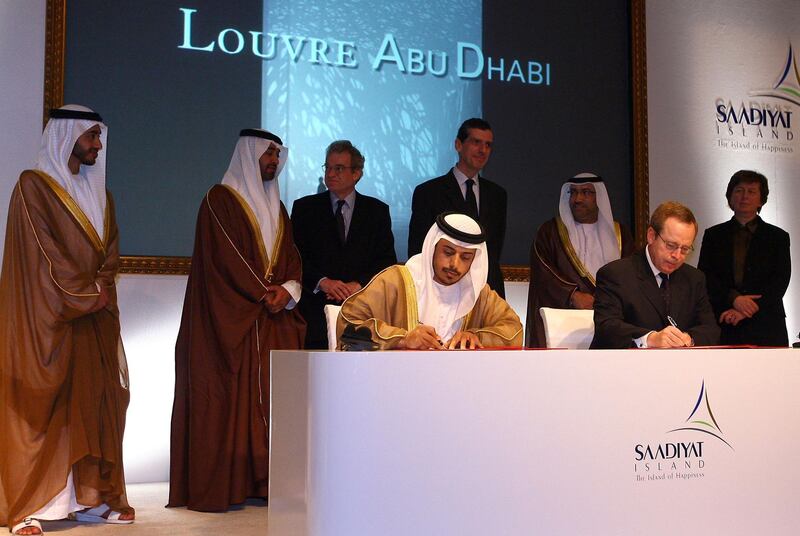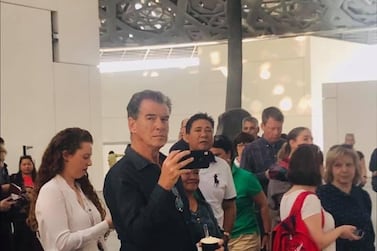Twelve years ago, on March 6, a significant step was taken towards Abu Dhabi realising its goal of becoming a "soft superpower" and a regional hub of ideas, art and tourism.
It was the day it was agreed that an annex of the famed Louvre Museum would be built in the UAE capital.
France's then Minister of Culture, Renaud Donnedieu de Vabres (pictured right, sitting), flew to Abu Dhabi to sign the agreement with Sheikh Sultan bin Tahnoon al Nahyan, Member of the Executive Council, who, at the time, was head of the Abu Dhabi Tourism Authority. The deal meant Abu Dhabi would pay $525 million (Dh1.9 billion) to use the Louvre name for 30 years.
A decade ago the UAE was known globally as a source of oil. Today, the museum, designed by architect Jean Nouvel, is a national treasure and a jewel in the crown of the Emirates' now-blossoming art scene.







